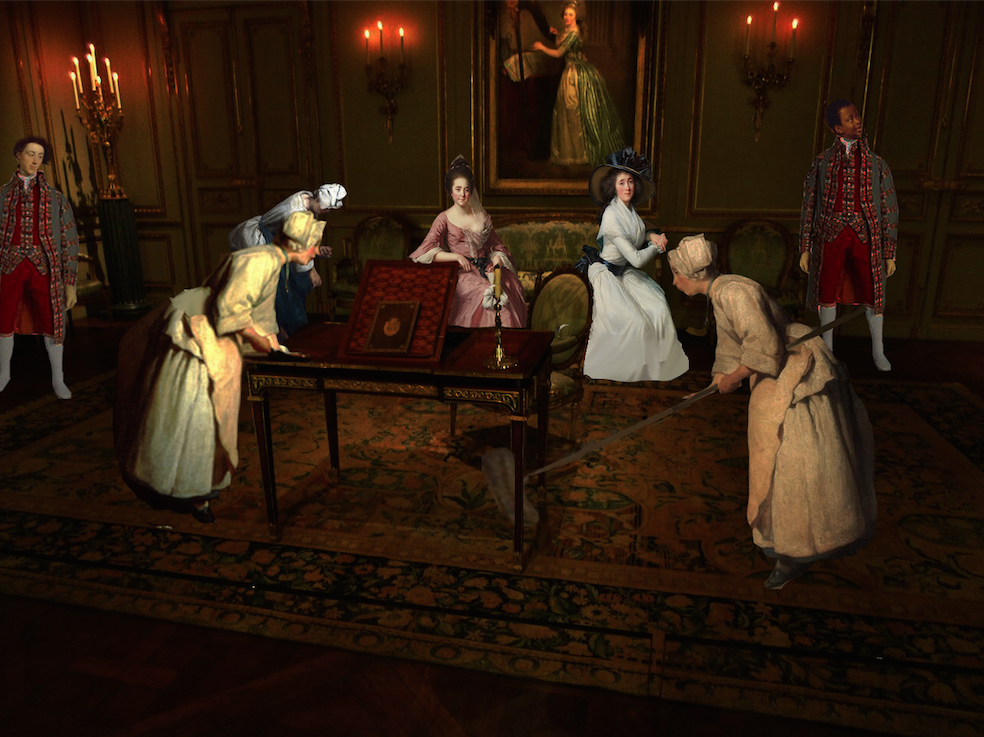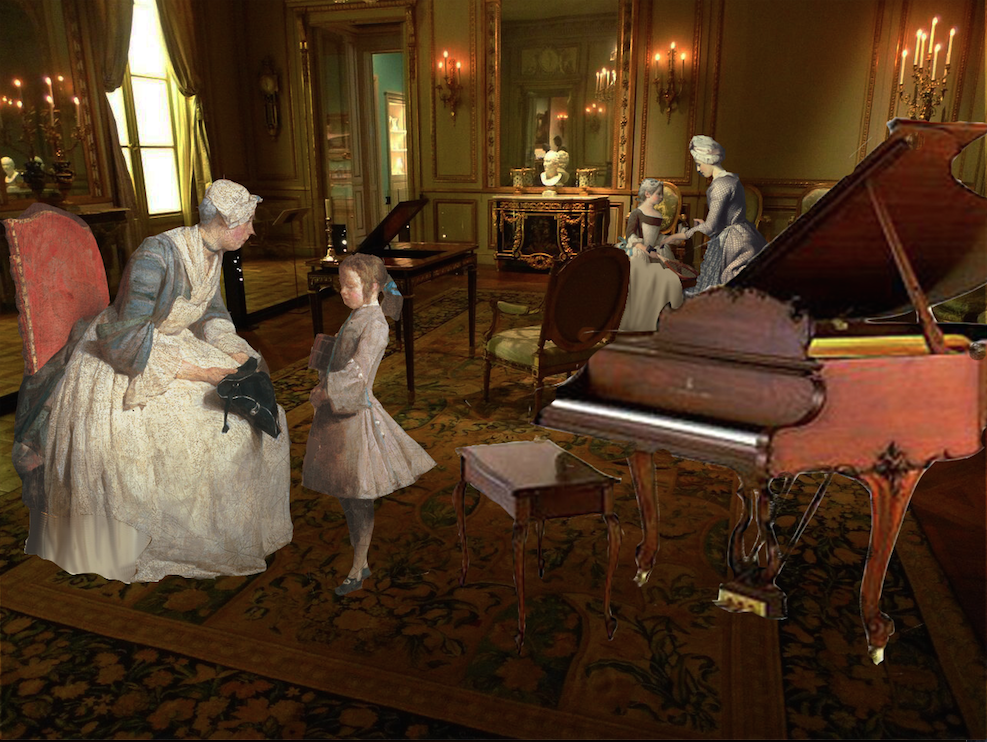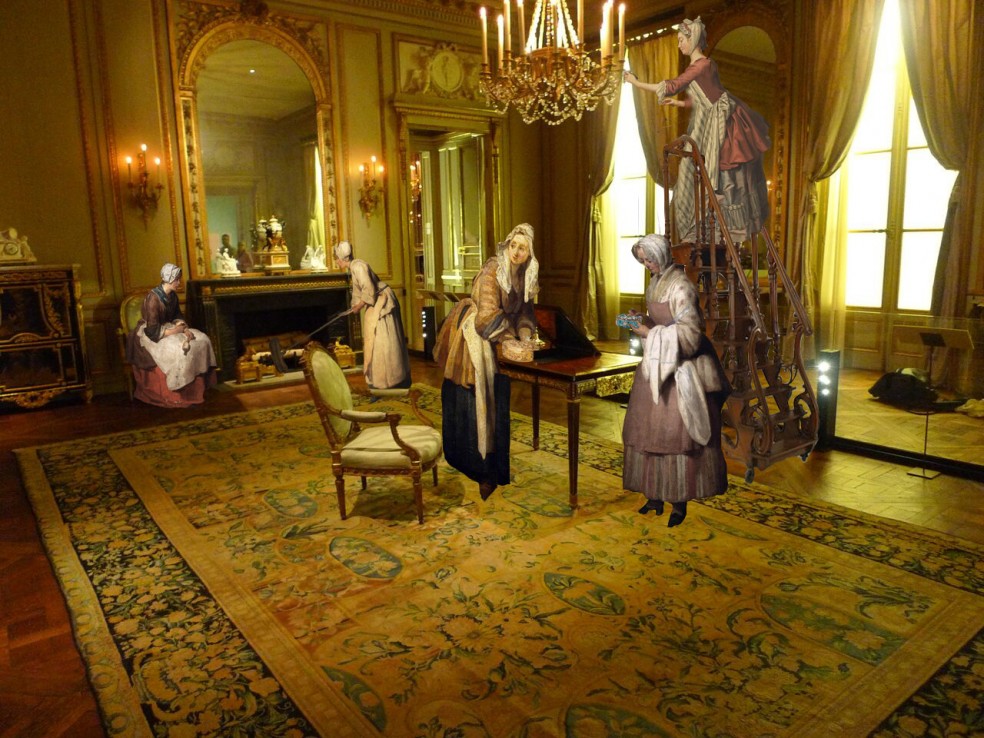A room like the Tessé room would have been occupied at most times of day by many servants. Though absent from most museum period rooms, we know from hints in paintings, from contemporary literature, and from scholarship on the 18th century that servants would have been present in such rooms. Masters were actually rarely alone, and their privacy was therefore relative. They depended on servants, and so did the maintenance and cleaning of the domestic spaces they inhabited. Repopulating the Tessé Room with servants therefore makes it more realistic.
The broader goal of the Servants project is to acknowledge the presence of male and female servants in upper-class and royal domestic spaces in eighteenth century France. Workers, servants, and racial minorities were the least visible figures of the Enlightenment, and are too easily forgotten. This project remembers a nearly invisible population of workers and honors their labor.



